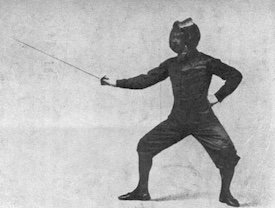bigshot: "In music there are certain narrow bands that are very important... especially in the high end- consonants on vocals, high end on cymbals, etc. If there is an imbalance in the wrong place in the midrange, it can obliterate one of those narrow bands and the treble can be greatly affected." That is a myth being made up as I have underlined. Yet you seem to not care because the dude is in our camp. Or else you don't know how egregious of an error it is to say those things. Really this is a fantastical story bigshot told. If we don't correct that, then this is a Kangaroo court designed to chase off the subjectivists regardless of merit.
1. Actually, the first half of what you've quoted is entirely correct/factual. It's correct for several reasons: A. It's something that every recording engineer knows; it's taught at university and experienced routinely in practice and B. It's entirely supported by the science!
For example, there is indeed a "certain narrow band" (approx between 2.5kHz and 3.5kHz) which is very important for the comprehension of speech. Every engineer know this and so too does the science; as discovered by Fletcher/Munson, supported by anatomy, numerous subsequent studies, routinely implemented (noise-shaped dither for example) and routinely called the "critical hearing band". This is just one example and one which you yourself know because I've seen you use the term "critical hearing band"! Why then do you keep quoting/underlining/bolding it and calling it a myth?
2. The second part of your quote is rather speculative and maybe bigshot could have qualified it with "in my experience". It's speculative because he has not provided any evidence beyond a personal anecdote. HOWEVER, "Absence of evidence is NOT evidence of absence", a fallacy upon which you seem to repeatedly rely! Your analogy with "cable believers" is nonsense because it is not an analogous! In the case of "cable believers" we've got (A) an "absence of evidence" AND (B) an overwhelming amount of reliable "evidence of absence". "Myth", "fantastical" and particularly "egregious error" are emotive, potentially insulting and absolute adjectives, their use can ONLY be justified if we have both A and B together! So where is your overwhelming amount of reliable "evidence of absence"? You haven't presented even a single piece of reliable "evidence of absence", let alone an overwhelming amount! Without that, you've created your own "kangaroo court designed to chase off" someone who disagrees with your (apparently fallacy based) opinion, which makes your statement both irrational and hypocritical in the extreme!
I stated clearly a few posts ago that we agree the phenomenon is not masking.
I'm not so sure, I believe it could be masking or maybe more precisely; a phenomena caused by masking (as explained in post #6677).
G





















+Psychophysical+Tuning+Curves+(PTCs):.jpg)


